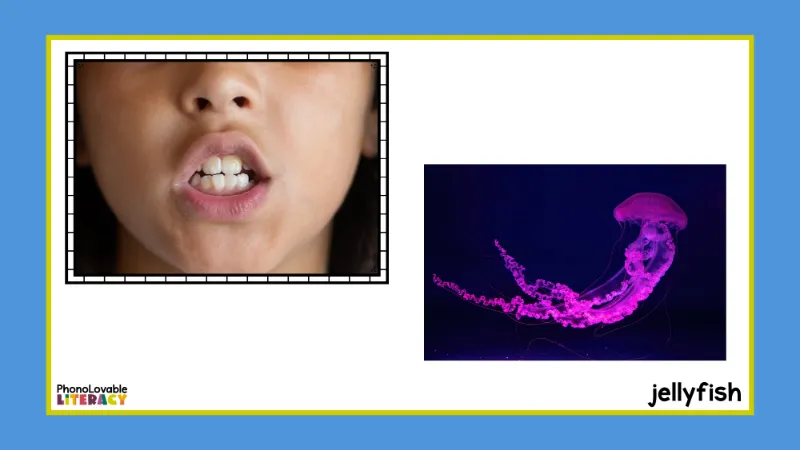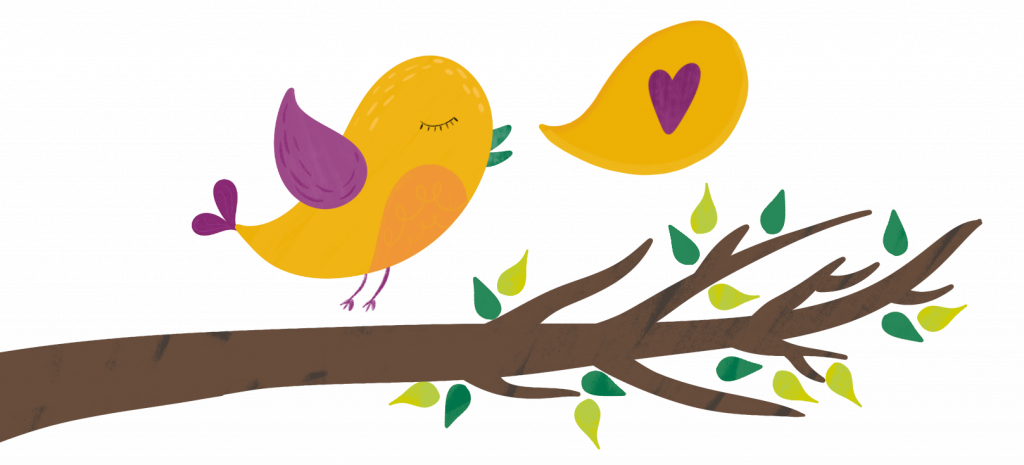Searching for an easy and engaging strategy to teach the letter j sound?
When introducing the letter sound j, many programs will have you say something like:
“This is the letter j (showing the printed letter). J says /j/, as in jellyfish (showing a picture of a jellyfish). Repeat after me, J, jellyfish, /j/”.
That’s one way to do it. It’s how I did it for about a decade.
However, after years of training in structured literacy and trying different approaches with my high-needs students, I now have a strong preference for the routine I’ll share below.
I love it because it’s easy to learn and implement, and it has consistently resulted in my students successfully learning letter sounds much more quickly than before.
So here’s my routine and a bit about why it works. If there’s something new for you here, I hope you’ll try it and see terrific results!
Routine for Introducing the Letter J and Its Sound
You can watch this video to get an idea of the entire routine. You can also just hit play and show it to your students!
Start with speech.
Why?
Children have a natural ability to process spoken language. So this is the most meaningful place to begin instruction. Focusing on the sound before introducing the letter that corresponds to that sound makes the most sense and gives students the greatest chance of success.
It’s also more fun for kids, especially when the speech is paired with photographs of jaguars and jellybeans.


How?
Say 3-6 words that begin with the letter j, like jellybeans, jumping, jars of jam, jaguars, juice, and jellyfish. Ask children to repeat each word after you say it. Projecting a visual of each word helps add interest and can be especially helpful for students with limited English vocabulary and kids who struggle with attention. Tell students that all of these words begin with the sound /j/. Try not to say “juh”; instead, try to clip the sound as much as you can. This helps when students start to blend words.
Draw attention to what your mouth does when you make the /j/ sound.
Why?
Helping our students observe how their mouths look and feel while producing a sound helps make an abstract concept more concrete. This also adds an extra multisensory component to our instruction, which is beneficial for many of our kids.


How?
Ask students to notice what their mouth is doing to make the sound /j/. Draw attention to the fact that our lips are open and squeezed towards each other. Our tongue pulls back with the tip touching behind our teeth. If you teach a small group, hold up a mirror to let students look at their lips. If you teach a larger group, just model the articulatory features and/or display a sound articulation card like the one pictured above.
Introduce the printed letter with an EMBEDDED mnemonic.
Why?
The research on this is pretty clear. Studies going back decades showed that using embedded keyword images to teach letter-sound relationships was more effective for student acquisition AND retention of taught letter sounds than other methods. The other methods include what you’ll find in many reading programs today – a keyword pictured above, below, or beside the printed letter. One study even found that using no picture (just a keyword) was more effective than having a picture next to (not embedded within) the letter! Having an embedded picture in the letter was the most effective method.


How?
Now it’s time to introduce the printed letter. But not just a plain letter, an embedded letter. The image of a keyword such as a jellyfish IN the letter j helps solidify the connection between letter and sound. We add a hand motion as an extra cue, mimicking a jellyfish swimming in the sea, as we say the /j/ sound.
Model and practice proper letter formation.
Why?
Reading and writing are the essential building blocks for strong communication and literacy skills. While our young students are far away from reading life-changing novels or writing powerful persuasive essays, it’s important for them to see early on how closely linked reading and writing are, even just at the letter-sound level. Plus, it’s easier to prevent inefficient letter formation now than to change ingrained habits later!


How?
I try to make my letter formation language easy to understand. You may have different wording from a program you’ve used, or you may wish to change up how you say this, but here’s what I say as I model how to write the lowercase letter j.
“Start at the middle line. Go all the way down (below the bottom line) and curve it up (to the left). Hop back up and make a dot.” I also like to show an animated slide on my computer (in small group) or smart TV (in whole group). Ask students to follow along with their fingers in the air. If children are seated at desks, ask them to finger-write it on the desk.
If you are tutoring or have one-on-one instruction, you can also do this in a tray of sand or beads. Shaving cream is also an option if you have a thick towel nearby to clean up the mess. None of those options are necessary though. Sky or desk writing works just as well and is no prep.
I usually have students practice without a writing utensil a few times before I ask them to write with a dry-erase marker or pencil.
Research-Aligned Alphabet Resources
Do you need engaging and effective resources to implement the steps above?
Here are my recommendations for introducing the letter j and other letters to your preschool or kindergarten students:
Initial Sound Slides: These no-prep slides introduce each letter sound in the most effective and efficient way. With each click, you will show images of interesting photographs containing the beginning sound, a photo of a real kid making the sound along with a keyword image, the letter with an embedded mnemonic image, and lastly, an animated letter formation slide (one for uppercase and one for lowercase letters).
Mnemonic Alphabet Articulation Mouth Cards | Alphabet Posters with Real Pictures: If you prefer a paper option or don’t have access to digital resources, you may like these printable, 1-page posters of mouth pics along with the embedded mnemonic letters. It’s also a nice way to display the alphabet if you have classroom wall space.
Alphabet Picture Cards with Embedded Mnemonics: This set of printable pages comes with embedded letter cards in two sizes. Teach phonemes for 21 consonants, 5 short vowels, AND consonant digraphs WH, TH, SH, CH, and CK.
Get a free set of small embedded letter cards when you join us in our newsletter community!
Looking for an “everything bundle” of embedded letter resources, including digital slides, letter cards, worksheets, games, and more? Save nearly 50% and get all 12 resources. Get your students quickly and effectively mastering letter sounds so they can begin the even more exciting discovery of how to read and write words!
Sources:
Ehri, L. C., Deffner, N. D., & Wilce, L. S. (1984). Pictorial mnemonics for phonics. Journal of Educational Psychology, 76(5), 880–893. https://doi.org/10.1037/0022-0663.76.5.880
Ehri, L. C. (2013). Orthographic Mapping in the Acquisition of Sight Word Reading, Spelling Memory, and Vocabulary Learning. Scientific Studies of Reading, 18(1), 5–21. https://doi.org/10.1080/10888438.2013.819356
Ehri, L.C. (2022). What Teachers Need to Know and Do to Teach Letter–Sounds, Phonemic Awareness, Word Reading, and Phonics. The Reading Teacher, 76(1), 53-61. https://doi.org/10.1002/trtr.2095
McNamara, G. (2012). The effectiveness of embedded picture mnemonic alphabet cards on letter recognition and letter sound knowledge. Theses and Dissertations. 302. https://rdw.rowan.edu/etd/302
Shmidman, A., & Ehri, L. (2010). Embedded Picture Mnemonics to Learn Letters. Scientific Studies of Reading, 14(2), 159–182. https://doi.org/10.1080/10888430903117492

